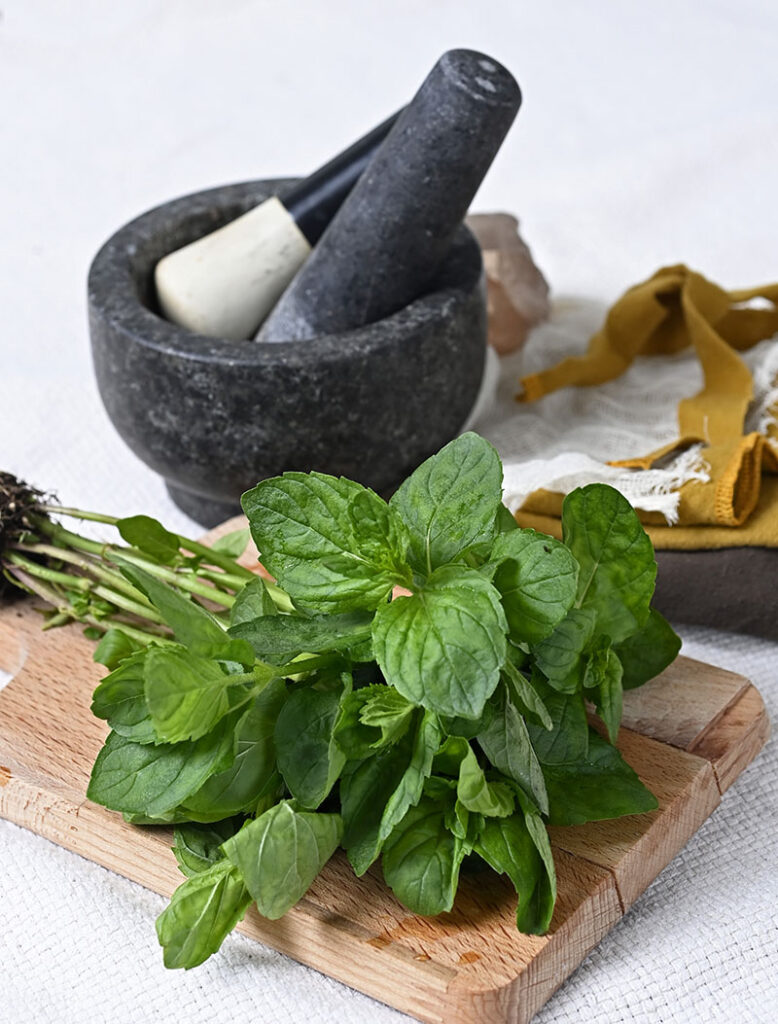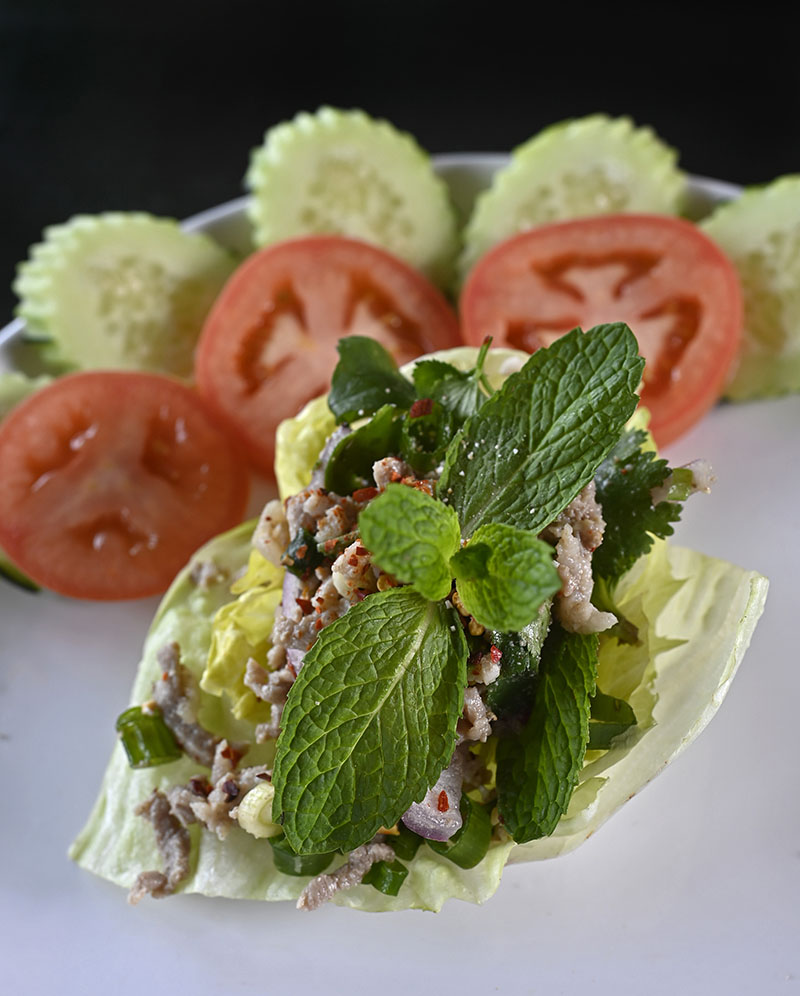Uses for mint beyond tea and juleps.
Cooling, refreshing mint abounds in gardens each summer. A prolific perennial, the species menthais cited in one of the world’s oldest surviving medical books from 1550 BC, the Egyptian Ebers Papyrus, as “a digestive and a tool to soothe flatulence.”
Beyond mint’s analgesic effects and palatable flavor profile, mentha in modern days also has been found to have medicinal effects, possessing antibacterial, antifungal, and even anti-cancer properties.
Scenting the air sweetly each spring and summer, mint is used in many ways. Sure, mojitos and mint juleps are refreshing libations each summer, and lamb gets a flavorful boost when mint jelly is added, but what else can you do with the abundant herb?
Indigenous Inventiveness
Nellie Davis, founder of Reno’s Sawabemuhano, a wellness center and gathering place, explains that the fresh leaves of the mint plant have long been used by the area’s Indigenous Paiute peoples for its pain-relieving properties.

A strong mint tea can be used as a wound wash, and adding mint to bath water and can relieve skin irritation due to insect bites, rashes, or sunburns. The leaves themselves also can provide medicinal relief.
“Fresh leaves were traditionally used by Numu (Paiute) people as a poultice, prepared by crushing the plant into a paste with a little water, or in some cases saliva,” Davis says. “When available, a piece of cloth could be put on the skin where affected to cover the area.”

Take Thai Food Up a Notch
In Thai cuisine, mint complements other staple ingredients such as cilantro, lime, garlic, and red onion, says Opal Rahm, co-owner and chef of Moo Dang in Midtown Reno. The Thai restaurant uses fresh, never cooked, mint in three of its salads: the laab, the lemongrass, and the nam tok.
Mint is also often used in spring rolls for its complementary fresh flavor — although not the ones at Moo Dang, Rahm explains. Mint is frequently found in Southeast Asian dishes, likely because it grows readily there.

Deliciously Diverse
Organic chef Priya Hutner says she uses mint all the time in her recipes crafted for clients. Its diversity allows for use in a multitude of culinary and beverage concoctions, in numerous cultures.
Hutner cooks the Middle Eastern staple tabbouleh with bulgur or quinoa, adding mint to enhance existing flavors. She makes a coriander mint chutney to accompany her Indian dishes, plus adds mint to her mouthwatering vegan cashew cheese.
During watermelon season, she impresses others with a watermelon, mint, and feta salad. A summer slush, made by blending watermelon, a squeeze of lemon, ice, mint, and a touch of sweetener such as honey or simple syrup, is a refreshing option for mint that she also recommends.
“Mint adds a certain kind of freshness and a unique element to food; it has a hint of sweetness but is not sugary. It adds a different kind of zip,” Hutner says. “There’s something about the way mint enhances a dish that I personally love. It pairs really well with a lot of foods.”
Some Italian dishes benefit from mint as well. One is rigatoni with summer squash, pecorino Toscano, and fresh mint. You will find a recipe for this from chef Tim Magee, co-owner of Calafuria in Midtown Reno, on Ediblerenotahoe.com.
Grab some mint this season, from the garden or grocery store. From freshening breath and helping the flavors in international cuisines pop to fighting cancer and skin ailments, fresh mint is the Swiss army knife of herbs.


